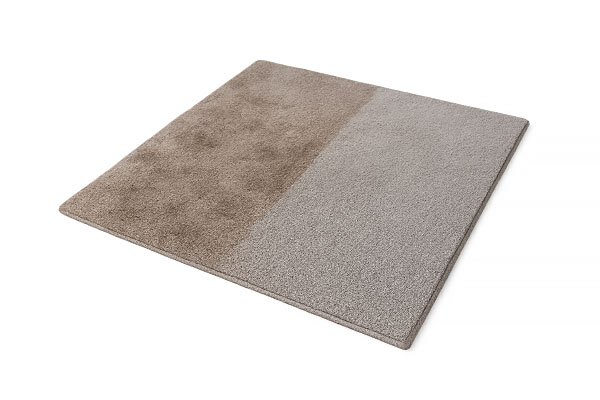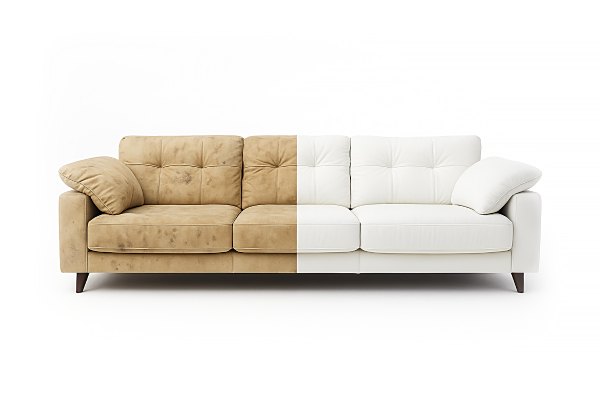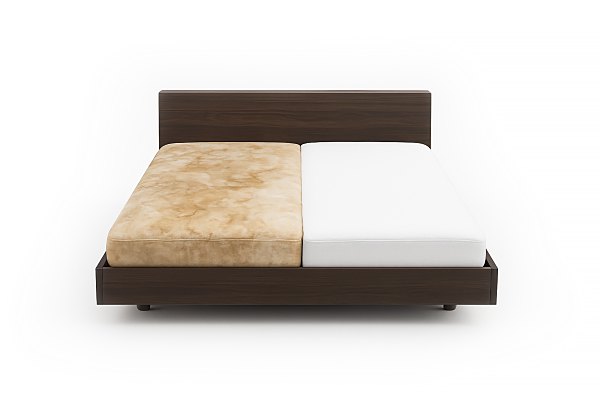Pet ownership brings countless joys to Australian households. Furry companions create lasting memories and unconditional love. However, pet hair and fur create ongoing cleaning challenges. These microscopic fibres embed deeply into carpet weaves. Traditional vacuum cleaners often struggle with stubborn pet hair. The problem becomes more complex during shedding seasons.
Effective pet hair removal requires understanding fibre science. Static electricity bonds hair to carpet surfaces. Different carpet materials present unique cleaning obstacles. Professional techniques combine with household methods for optimal results. This comprehensive guide explores proven strategies for Australian pet owners.
The following methods transform carpet maintenance routines. Simple tools create remarkable improvements in cleanliness. Professional services address persistent hair problems efficiently. Prevention strategies reduce future accumulation significantly. These techniques work across various pet breeds and carpet types.
Why pet fur and hair embed so deeply in carpet fibres and how to tackle the challenge
Pet hair creates complex cleaning puzzles due to scientific factors. Static electricity plays the primary role in hair adhesion. Friction between pets and carpets generates electrical charges. These charges create magnetic-like attractions between hair and fibres. Understanding this process helps develop targeted removal strategies.
The microscopic structure of pet hair contributes to embedding problems. Individual hair strands contain tiny scales along their surfaces. These scales function like miniature hooks that catch carpet fibres. Once embedded, hair becomes increasingly difficult to extract. Standard cleaning methods often push hair deeper rather than removing it.
The science behind static electricity and pet hair
Carpet pile height directly affects hair penetration depth. Low-pile carpets trap hair near the surface level. High-pile carpets allow hair to sink between fibres. Deeper penetration requires more aggressive removal techniques. Carpet density also influences hair retention patterns significantly.
Synthetic carpet materials generate higher static charges than natural fibres. Nylon and polyester carpets attract pet hair more aggressively. These materials require specific treatment approaches for effective cleaning. Static reduction becomes essential before attempting hair removal.
Environmental conditions amplify static electricity problems in Australian homes. Dry winter air increases electrical charge buildup dramatically. Heating systems further reduce humidity levels throughout homes. These conditions create ideal environments for hair adhesion.
Physical properties affecting hair removal difficulty
Pet coat characteristics determine removal complexity levels significantly. Double-coated breeds shed differently than single-coated animals. Undercoat hair tends to embed more deeply. Guard hairs remain closer to carpet surfaces generally. Understanding these differences helps select appropriate cleaning tools.
Hair length affects embedding patterns in predictable ways. Longer hair creates surface tangles that resist removal. Shorter hair penetrates deeper into carpet pile. Medium-length hair presents the greatest removal challenges. Each length requires different mechanical approaches for effective extraction.
Essential tools for static reduction:
- Fabric softener spray bottles
- Rubber gloves with textured surfaces
- Anti-static carpet treatments
- Humidifiers for dry environments
- Dryer sheets for quick treatments
Temperature variations affect both carpet fibres and pet hair. Warm conditions make carpet fibres more flexible. Flexible fibres grip hair more tightly initially. Cold temperatures make fibres brittle and release hair easier. Timing cleaning activities around temperature changes improves results.
The best household tools and gadgets for removing stubborn pet hair from carpets
Effective pet hair removal begins with proper tool selection. Standard household items often outperform expensive commercial gadgets. Understanding each tool’s mechanism helps achieve better results. Combining multiple tools creates comprehensive cleaning systems. Cost-effective solutions work as well as professional equipment.
Rubber gloves represent the most versatile pet hair removal tool. The rubber material creates friction against carpet surfaces. This friction generates static electricity that attracts loose hair. Slightly damp gloves work better than completely dry ones. The moisture helps neutralise existing static charges effectively.
Manual removal techniques and applications
Squeegees with rubber blades create excellent carpet cleaning tools. Their design generates consistent friction across carpet surfaces. Work in single directions to avoid redistributing hair. Short, overlapping strokes produce optimal results consistently. This technique works particularly well on medium-pile carpets.
Lint rollers provide precision cleaning for targeted areas. They excel at removing recently shed hair effectively. Use firm pressure while rolling in multiple directions. Replace adhesive sheets frequently to maintain effectiveness. This tool works best for spot cleaning tasks.
High-performance household tools:
- Damp rubber cleaning gloves
- Window squeegees with rubber blades
- Large lint rollers with strong adhesive
- Fabric softener dryer sheets
- Fine-mist spray bottles
- Stiff-bristled cleaning brushes
Fabric softener sheets reduce static electricity while removing hair. Wipe sheets across carpet surfaces before using other tools. The anti-static properties make subsequent removal easier. This technique works especially well on synthetic carpets. Replace sheets frequently for maintained effectiveness.
Advanced mechanical solutions for stubborn hair
Carpet rakes with fine metal teeth penetrate deep pile. They physically lift embedded hair from carpet depths. Use gentle pressure to avoid damaging carpet fibres. Work systematically across entire carpet areas methodically. These tools require proper technique for safe operation.
Rubber brooms designed specifically for pet hair create static electricity. Their flexible bristles bend to reach carpet depths. The static charge attracts hair to broom surfaces. Work in overlapping patterns for complete coverage. These tools work well as pre-treatment before vacuuming.
Electric carpet sweepers provide chemical-free cleaning alternatives. They use rotating brushes to lift hair mechanically. These devices consume less energy than traditional vacuum cleaners. They work well for daily maintenance cleaning routines. Battery-powered models increase convenience significantly.
Tennis balls create static electricity when rubbed against carpets. Roll tennis balls across carpet surfaces with firm pressure. The felt material attracts loose hair effectively. This technique works well for large carpet areas. Replace tennis balls when they become too hair-covered.
DIY cleaning solutions using baking soda, fabric softener, and other pantry staples
Homemade cleaning solutions provide cost-effective alternatives to commercial products. Common kitchen ingredients create powerful pet hair removal aids. These solutions work by reducing static electricity naturally. Most pantry staples remain safe for pets and children. Creating custom solutions allows control over ingredient quality.
Fabric softener creates the most effective DIY static reduction solution. Mix one part liquid fabric softener with three parts water. Add the mixture to spray bottles for easy application. Spray lightly on carpet areas before cleaning attempts. The softener reduces static charges that hold hair firmly.
Baking soda treatment methods and applications
Baking soda serves multiple functions in pet hair removal. It neutralises odours while reducing static electricity simultaneously. Sprinkle baking soda evenly across carpet surfaces carefully. Allow the powder to sit for 15-20 minutes. Vacuum thoroughly to remove both baking soda and loosened hair.
Enhanced baking soda mixtures increase effectiveness significantly. Combine equal parts baking soda and cornstarch thoroughly. This mixture creates superior static reduction properties. The cornstarch adds extra friction for hair removal. Work the mixture into carpet pile gently.
Natural cleaning ingredients for pet hair removal:
- Baking soda for odour neutralisation
- White vinegar for static reduction
- Liquid fabric softener for hair release
- Cornstarch for enhanced effectiveness
- Essential oils for pleasant fragrance
- Distilled water for solution mixing
Baking soda works particularly well on natural fibre carpets. Wool and cotton carpets respond excellently to this treatment. The alkaline properties help release embedded hair naturally. Test small areas first to ensure colour safety. Allow complete drying before walking on treated areas.
Vinegar-based solutions for natural static control
White vinegar creates natural anti-static cleaning solutions effectively. Mix equal parts white vinegar and distilled water. Add several drops of essential oil for improved fragrance. This solution works particularly well on synthetic carpet materials. The acid neutralises static charges that attract pet hair.
Apply vinegar solutions sparingly to prevent carpet over-wetting. Use fine-mist spray bottles for even distribution. Test inconspicuous areas first for colour fastness. Allow carpets to dry completely before normal use. The vinegar smell dissipates quickly during drying.
Salt creates friction that helps lift stubborn pet hair. Sprinkle coarse salt lightly over carpet areas. Work salt into carpet pile with soft brushes. The abrasive action loosens embedded hair effectively. Vacuum thoroughly after salt treatment completion.
Ice cubes provide temporary moisture for static reduction. Rub ice cubes lightly over carpet surfaces. The melting ice creates optimal moisture levels. Work quickly before carpets become overly wet. This method works well in dry climates.
Pro tip: Combine fabric softener spray with rubber glove removal for maximum effectiveness on deeply embedded hair.
Professional carpets cleaning services in Sydney provided by SevenClean
Professional carpet cleaning services tackle persistent pet hair problems beyond household capabilities. SevenClean stands as Sydney’s trusted cleaning specialist for comprehensive carpet care. Their expert team combines advanced equipment with specialised techniques. Professional services address both surface hair and deeply embedded fibres effectively. These services maintain carpet integrity while achieving superior cleanliness.
SevenClean provides complete carpet and rug cleaning throughout Sydney metropolitan areas. Their professional approach removes dirt, stains, odours, and embedded pet hair simultaneously. The company specialises in safe, thorough cleaning services. Their techniques address unique challenges posed by pet hair accumulation. Professional equipment surpasses household cleaning capabilities significantly.
Comprehensive carpet and rug cleaning services
Professional carpet cleaning involves multi-step processes that exceed standard cleaning methods. SevenClean’s carpet cleaning service removes embedded pet hair using industrial-grade equipment. Their techniques address surface hair and deeply embedded fibres equally. Pet hair requires specific attention during professional cleaning processes.
The professional cleaning process begins with thorough pre-inspection procedures. Technicians assess carpet condition, fibre types, and contamination levels. This assessment determines appropriate cleaning methods for each situation. Pet hair distribution patterns receive special evaluation attention. Different carpet areas may require varied cleaning approaches.
Professional extraction equipment removes hair that resists household cleaning attempts. High-powered vacuum systems create superior suction capabilities. Specialised brush attachments agitate carpet pile effectively. This agitation loosens embedded hair for easier removal. Professional equipment operates at higher efficiency levels consistently.
Complete cleaning service range for pet owners
SevenClean extends services beyond standard carpet cleaning procedures. Their upholstery cleaning service addresses furniture that collects pet hair. Professional upholstery cleaning removes embedded hair from fabric furniture. Sofas, chairs, and cushions receive thorough cleaning attention.
SevenClean professional services include:
- Expert carpet and rug cleaning
- Comprehensive upholstery cleaning
- Thorough mattress cleaning services
- Advanced stain and odour removal
- Specialised pet hair extraction
- Professional sanitisation treatments
Their mattress cleaning service tackles pet hair in bedroom environments. Pets often sleep on beds, leaving hair embedded deeply. Professional cleaning removes hair along with allergens and odours. This service improves sleep quality for sensitive individuals. Regular mattress cleaning maintains healthy sleeping environments.
Professional furniture upholstery cleaning addresses pet hair throughout homes. Fabric furniture accumulates significant hair quantities over time. Standard household cleaning cannot reach deeply embedded fibres. Professional techniques extract hair from furniture depths effectively. This service extends furniture lifespan while improving appearance.
SevenClean maintains comprehensive service coverage across Sydney areas. Their team responds to residential and commercial cleaning needs. Professional scheduling accommodates busy lifestyles effectively. Regular maintenance programs prevent overwhelming hair accumulation. Professional services complement household cleaning efforts efficiently.
SevenClean services
How different carpet types affect pet hair removal and which cleaning methods work best
Carpet construction significantly impacts pet hair removal difficulty and technique selection. Different fibre types interact uniquely with pet hair through varying static properties. Understanding these differences helps select appropriate cleaning methods efficiently. Fibre composition affects both hair attraction and release mechanisms. Proper technique selection prevents carpet damage while maximising hair removal.
Natural fibre carpets create different challenges than synthetic materials consistently. Wool fibres have protein structures similar to pet hair. This similarity creates stronger bonding between materials naturally. Hair removal becomes more difficult but remains achievable with proper techniques. Wool requires gentler cleaning approaches to prevent damage.
Synthetic carpet considerations and cleaning approaches
Nylon carpets generate substantial static electricity that attracts pet hair. However, their smooth fibre structure releases hair easier once neutralised. Use anti-static treatments before attempting hair removal procedures. Fabric softener solutions work particularly well on nylon materials. The smooth surface allows tools to glide effectively.
Polyester carpets have similar static properties with different cleaning requirements. Their fibres can become damaged by aggressive cleaning methods. Use gentle techniques with adequate moisture for protection. Damp rubber gloves work excellently on polyester carpets. Avoid excessive pressure that might damage fibre integrity.
| Carpet Type | Static Level | Best Removal Method | Special Considerations |
|---|---|---|---|
| Wool | Low | Rubber tools, gentle brushing | Avoid excessive moisture |
| Nylon | High | Anti-static spray, vacuum | Reduce static first |
| Polyester | Medium | Damp rubber gloves | Use gentle pressure |
| Polypropylene | Low | Standard vacuuming | Most removal-friendly |
Polypropylene carpets generate minimal static electricity naturally. This characteristic makes hair removal easier generally. Standard vacuum cleaners work more effectively on these materials. Regular maintenance prevents significant hair accumulation problems. These carpets require less specialised cleaning approaches.
Natural fibre carpet strategies and techniques
Wool carpets require gentler approaches due to delicate nature. Excessive moisture can cause shrinkage and colour bleeding. Use barely damp rubber gloves for manual removal. Work systematically in small sections to avoid over-wetting. Allow complete drying between cleaning sessions.
Cotton carpets, while less common, present unique cleaning opportunities. Their natural fibres generate minimal static electricity. Standard vacuum cleaners work more effectively on cotton. Regular maintenance prevents significant hair accumulation. These carpets respond well to baking soda treatments.
Jute and sisal carpets have rough textures that trap hair differently. Their natural fibres resist static electricity generation. However, rough surfaces make hair removal more challenging. Use stiff brushes to work hair from textured surfaces. Vacuum immediately after brushing to prevent redistribution.
Pro tip: Always identify carpet fibre composition before selecting cleaning methods to prevent damage and achieve optimal results.
Preventing pet hair build-up through regular maintenance and grooming strategies
Prevention remains the most effective approach for managing pet hair in carpets. Regular grooming reduces loose hair available for carpet embedding. Establishing consistent maintenance routines prevents overwhelming accumulation problems. Professional grooming services provide comprehensive solutions for shedding management. Environmental control strategies complement grooming efforts effectively.
Daily grooming routines reduce carpet hair accumulation by significant percentages. Different pet breeds require specific grooming frequencies and techniques. Long-haired breeds need daily brushing during shedding seasons. Short-haired pets benefit from weekly grooming sessions. Consistent routines prevent loose hair from reaching carpets.
Establishing effective grooming routines for different pets
Professional pet grooming services provide comprehensive shedding management solutions. Regular professional grooming removes loose undercoat effectively. Seasonal grooming adjustments account for natural shedding cycles. Spring and autumn require increased grooming frequency naturally. Professional services complement home grooming efforts efficiently.
Slicker brushes work excellently for long-haired pet breeds. Their fine wire bristles penetrate dense coats effectively. Remove loose hair before it falls naturally. Work systematically through entire coat areas. Clean brushes frequently during grooming sessions.
Daily maintenance tasks for pet owners:
- Brush pets before indoor activities
- Quick vacuum high-traffic carpet areas
- Use air purifiers for airborne hair
- Maintain optimal humidity levels consistently
- Wash pet bedding weekly minimum
- Place washable rugs strategically
Rubber curry combs suit short-haired pets particularly well. Their flexible rubber bristles massage skin while removing hair. Work in circular motions for maximum effectiveness. Short-haired pets enjoy curry comb grooming generally. These tools work well for daily maintenance.
Environmental control and strategic protection methods
Air purification systems capture airborne pet hair before carpet settling. HEPA filters effectively trap pet dander and loose hair. Place air purifiers in rooms where pets spend time. Run purifiers continuously during heavy shedding seasons. Regular filter replacement maintains optimal performance levels.
Humidity control reduces static electricity throughout homes naturally. Maintain humidity levels between 40-50% for optimal conditions. Use humidifiers during dry winter months consistently. Dehumidifiers help in excessively humid climates. Balanced humidity makes hair removal easier generally.
Strategic carpet protection techniques:
- Washable area rugs in pet areas
- Designated pet-free zones establishment
- Regular professional carpet treatments
- Strategic furniture placement planning
- Pet bedding in controlled locations
Washable area rugs protect permanent carpeting in pet-favoured locations. Place machine-washable rugs near pet beds and feeding areas. Regular washing removes accumulated hair before transfer. This strategy concentrates cleaning efforts in manageable areas. Choose rugs that complement home décor naturally.
Professional carpet protection treatments create barriers against hair embedding. These treatments make routine cleaning more effective consistently. Apply treatments annually or following manufacturer recommendations. Protected carpets release hair easier during cleaning. Professional application ensures proper coverage and effectiveness.
Pro tip: Establish pet-free zones in select rooms to maintain hair-free spaces for family members with allergies.
Summary
Effective pet hair removal from carpets requires understanding the scientific principles behind hair embedding. Static electricity and carpet fibre structure create primary challenges that make pet hair cling tenaciously. Simple household tools like rubber gloves and squeegees often outperform expensive commercial gadgets when used correctly. Professional services like SevenClean provide comprehensive solutions for persistent problems that exceed household capabilities.
Different carpet types require specific approaches, with synthetic fibres generating more static electricity than natural materials. Prevention through regular pet grooming and strategic environmental controls remains the most effective long-term solution. Combining multiple techniques creates comprehensive cleaning systems that maintain carpet appearance and indoor air quality for Australian pet-owning households.





